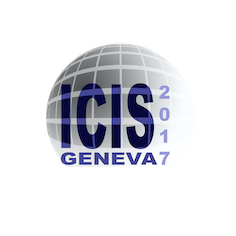Speaker
Description
Tandem type hydrogen negative ion (H$^-$) sources are generally designed to have two plasma regions of different average electron energies. The higher and lower electron energy regions are called “driver region” and “extraction region”, respectively [1]. The driver region should contain electrons with energy high enough to produce excited hydrogen molecules for H$^-$ production. On the other hand, the extraction region is generally located in the vicinity of a beam extraction hole in order to enhance H$^-$ beam current, while avoiding the H$^-$ destruction due to the higher energy electrons over 1 eV. The separation of the two plasma regions is realized with the filter magnetic field which is introduced to the extraction region. Therefore, the low-energy electron transport in the filter field determines the plasma parameters at the extraction region which decides the performance of H$^-$ sources.
In this study, we aim to understand mechanism of the low-energy electron transport at the extraction region through experiments, especially transport across the filter magnetic field, using numerical simulations in order to obtain basic knowledge for development of more efficient H$^-$ sources.
In the experiment, we use a test stand with a small cylindrical-shape ion source whose diameter and length are 9 cm and 11 cm, respectively [2]. The ion source generates a DC hydrogen plasma with a pair of tungsten filament installed at the driver region. Here, to study the low-energy electron transport, we introduced another filament system [3] inside the extraction region. The additional filament system enhances density of low-energy electrons in the extraction region. The injected electrons diffuse around the filament and the electron density increases locally. The transport of these low-energy electrons in the extraction region can be studied through an analysis of the local change on the density profile. Thus, we measured the spatial distribution of electron density with a Langmuir probe under different experimental conditions. The experimental results were analyzed with two-dimensional position and three-dimensional velocity Particle-In-Cell (2D3V PIC) simulations to understand the low-energy electron transport.
In our early experiments, we have already confirmed the local-density enhancement in electron density profiles. In a poster, we will report the results of experiment and analysis with the PIC simulation.
References
[1] K. N. Leung and W. B. Kunkel, Phys. Rev. Lett. 59, 787 (1987).
[2] Y. Matsumoto, M. Nishiura, M. Sasao, H. Yamaoka, K. Shinto, and M. Wada, Rev. Sci. Instrum. 79, 02B909 (2008).
[3] K. N. Leung, K. W. Ehlers, and R.V. Pyle, Rev. Sci. Instrum. 57, 321 (1986).
